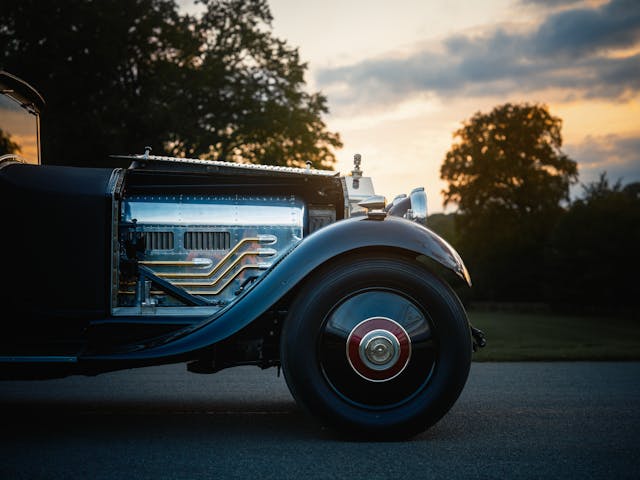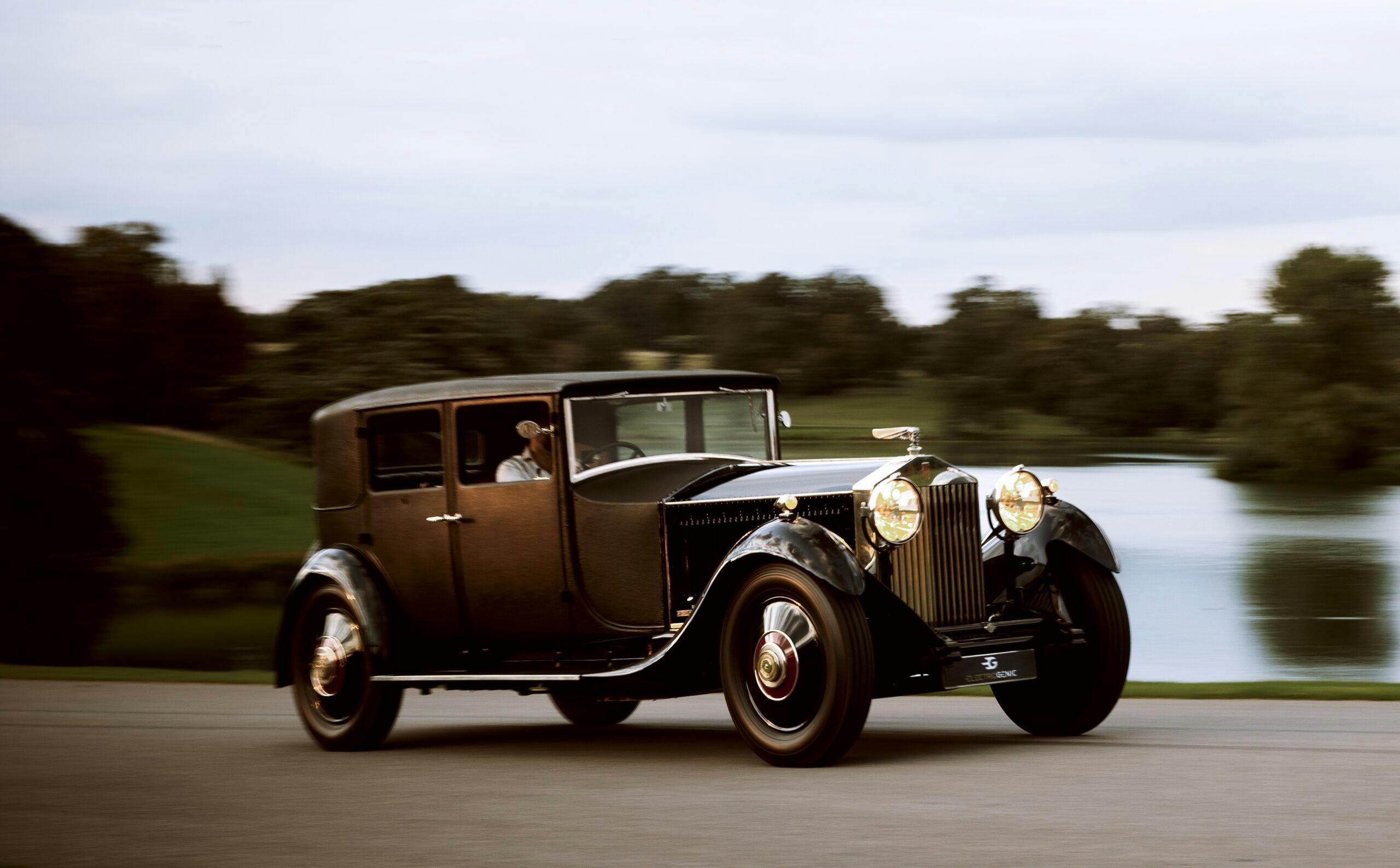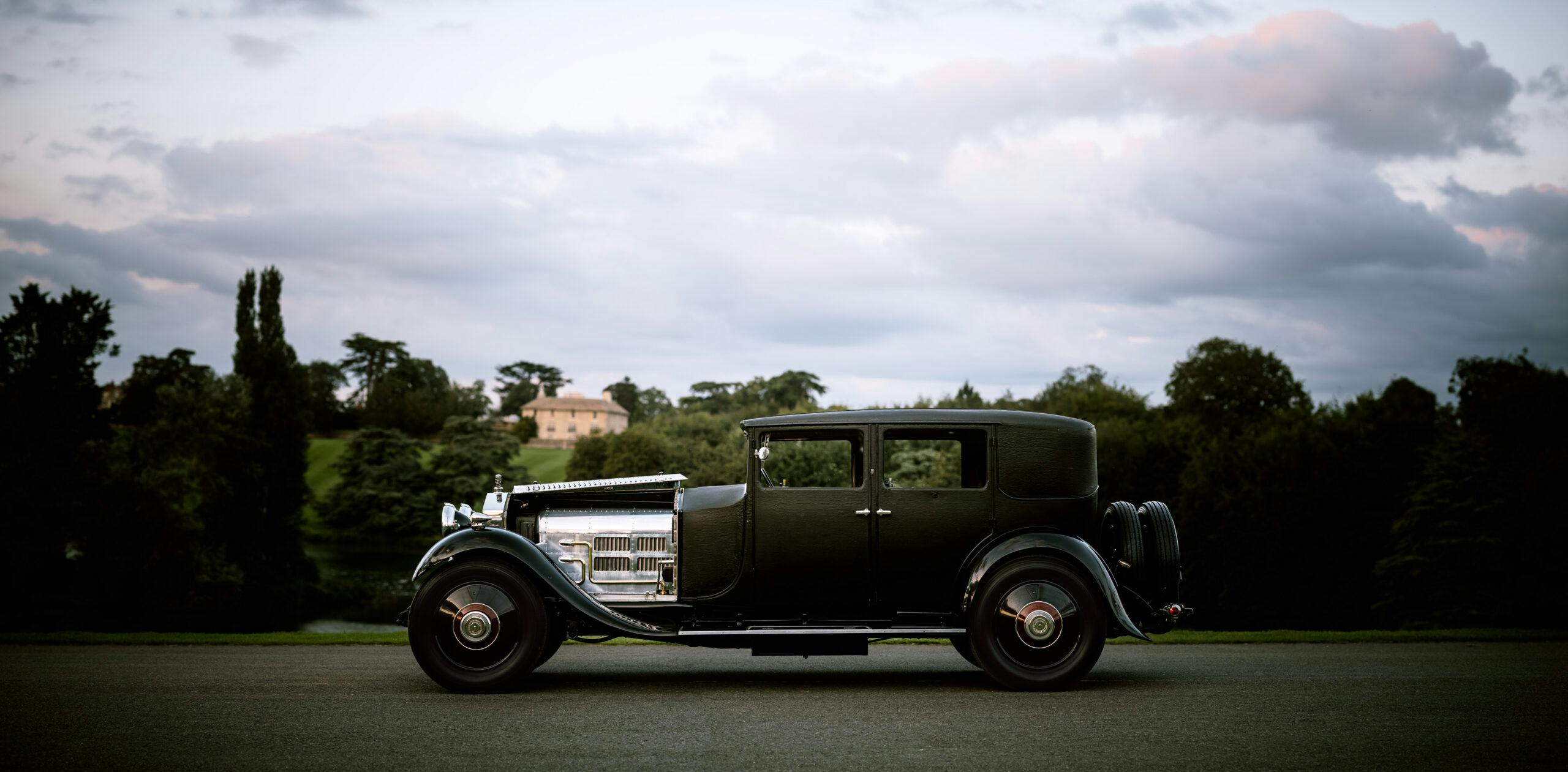Why Jason Momoa’s Electric Rolls-Royce Was a Phantom Menace to Build
When Hollywood actor Jason Momoa decided to convert his 1929 Rolls-Royce Phantom II to electric power he turned to British specialists Electrogenic.
The car, which features in Momoa’s documentary show On The Roam, took more than 18 months to build in Electrogenic’s Oxfordshire workshop. Electrogenic boss Steve Drummond believes electrifying the Phantom was “probably the most complicated project [of its type] anybody in the world has ever done.”

Momoa was actively involved from the outset, defining the car’s specifications based on how he planned to use it. “Jason is particularly visual,” explains Drummond. “So he was very interested in the visuals under the bonnet, in particular, and also in keeping the car original externally and in the cabin.”
“We couldn’t just fill the space under the bonnet with batteries, because the engine is quite narrow in the bay. So we designed the batteries to maintain that sort of feel. Then in terms of the visuals, we had a talk with him, we came up with some visualizations and some 3D renders designs and renders. He chose what he preferred and then tweaked it a little bit and so he was he was very much involved.”

The ornate aluminum housing was hand-formed and riveted to become a sculptural element of the vehicle that would be worthy of proud display, unlike most EV conversions with their bland battery boxes.
However, it was the engineering rather than the aesthetics that was hardest to pull off. Removing the Phantom’s 7.7-liter pushrod straight-six engine and transmission had unusual implications thanks to the car’s ingenious “through-flow” chassis lubrication system and its brakes.
“The lubrication system and the brakes that were perhaps the biggest challenge, because once you’ve done away with the engine, you lose the drive for those features,” explains Drummond. “The way it works is it has a lot of push rods and pivot points that deal with all sorts of things including the brakes. And they are lubricated by a central system which simply sends oil down a series of pipes to the various bushings. By removing the gearbox we had to modify that system. The braking system was complex for two reasons. One is the brakes themselves, as they’re cable-operated through a series of pivots and levers which sit between the chassis rails in just the area where we wanted to put batteries. So we removed them and then fixed them elsewhere in the car which means we have all the same linkages with same ratios and so on, but just relocated.”
The next trick was how to make the setup work in conjunction with regenerative braking, which is vital to providing the Phantom’s 150-mile range. Electrogenic designed a new brake pedal with a hydraulic booster connected to the cable while the regenerative braking on the rear motor helps maintain the car’s original 40:60 front-to-rear brake bias.
The drivetrain and its control systems are similar to Electrogenic’s Land Rover Defender kits, albeit with a whopping 93 kWh of batteries installed. As you can imagine these cells aren’t exactly light, but the original engine weighed around 1650 pounds so the conversion is almost weight neutral. “It’s plus or minus a few kilograms—it’s almost nothing,” says Drummond.
Inside, the elegance of the Phantom has been maintained, but the original clocks serve new functions. The amp meter is now a power meter, and the oil temperature and water temperature gauges now show charger and motor temperatures, while the vertical sight glass which showed the fuel level has been swapped for an LED unit. Momoa also requested a high-end hifi stereo, which is discretely hidden from view.
“The challenge with the Rolls Royce was how to fit all this into such an amazing car without changing its character and in a sympathetic way.”
It appears to be a job well done, with Momoa a very happy customer. “In order to pull off this dream project, I had to find the right partner,” he says. “I needed a team that would appreciate the storied history of this car while updating its technology. Electrogenic is all about honoring vintage cars. Making them electric without losing any of the vehicle’s character. They were the perfect fit.”
***
Check out the Hagerty Media homepage so you don’t miss a single story, or better yet, bookmark it. To get our best stories delivered right to your inbox, subscribe to our newsletters.








Destroyed a perfectly good and classic car. These conversions are not a good thing for the hobby.
This is an absolutely brilliant conversion.
Especially a Phantom, they were supposed to be the epitome of class and elegance. What’s more elegant than silence? I love that they didn’t restomod it, and instead tried to make it look as period as possible.
I think it’s fair to say it’ll see more use in it’s current iteration than the original as well.
What, no audio speakers simulating the sounds of the original motor and transmission? And while they were at it, why didn’t they also employ carbon fiber body panels made to simulate the original panels? That would have extended the electric driving range. Where does one stop? Seems to me this is coming awfully close to the 21st century equivalent of an Excalibur.
Back in time when these cars were new, they didn’t break down every week. They were reliably driven often, and maintained extremely well. Instead of spending the ungodly sum it took to make this electric theoretically trouble free”thing”, alternatively I would have rather spent my money in much smaller chunks annually, even quarterly, to keep the original running in top condition and be able to be driven on a daily basis if desired. Betcha it would take 20 years (if ever) to reach the economic crossover point, because those electric systems will need periodic maintenance and then updating as well.
Why must one suffer to enjoy the hobby? Modern conveniences like A/C and music are things that would see a car used more often, this is no different. The older mechanical stuff suffers from a few disadvantages:
-The mechanical bits are 95 years old. Availability and reliability will never be what they were new.
-Likewise, the talent pool that can tune/maintain/repair that gear is shrinking yearly
-Old iron doesn’t like to sit. This isn’t anyone’s daily driver any more and likely never will be. Batteries and an electric motor are far more indifferent to sitting for weeks (or months for us that see winter) at a time
At the end of the day, the old iron is out being enjoyed. Gatekeeping the hobby because you don’t like what’s been changed just serves to drive people away, letting these old machines rot away in someone’s barn.
I saw and filmed this car at Goodwood Revival last year and I have photos and videos.
The tacky hood ornaments only underscore the desecration to this car. Pre-war Rolls-Royces were known for the large engines built with watchmaker precision. Momoa’s vandalism has torn the heart out of this car. It’s just awful. Why doesn’t he buy a cheap replicar instead.